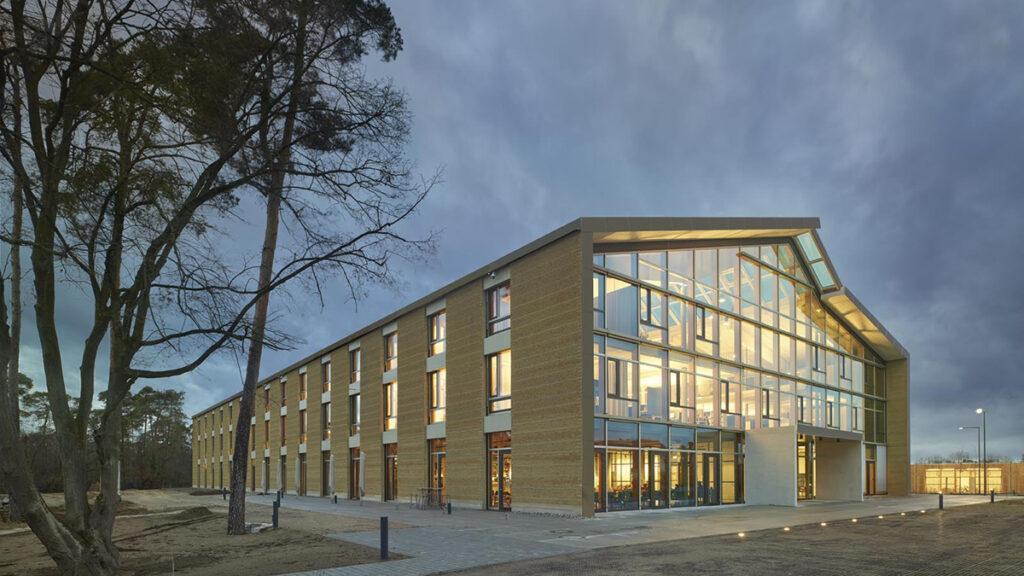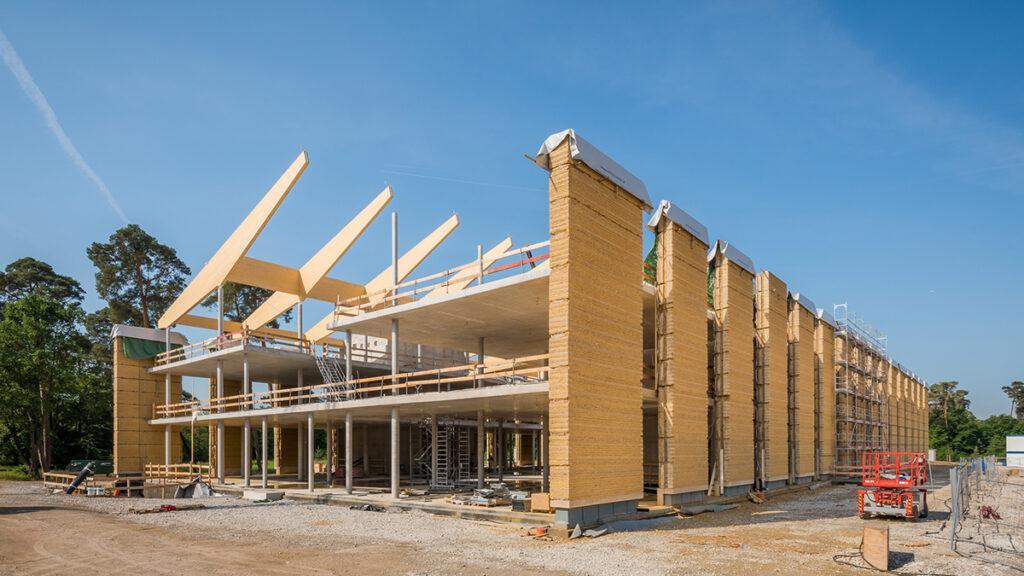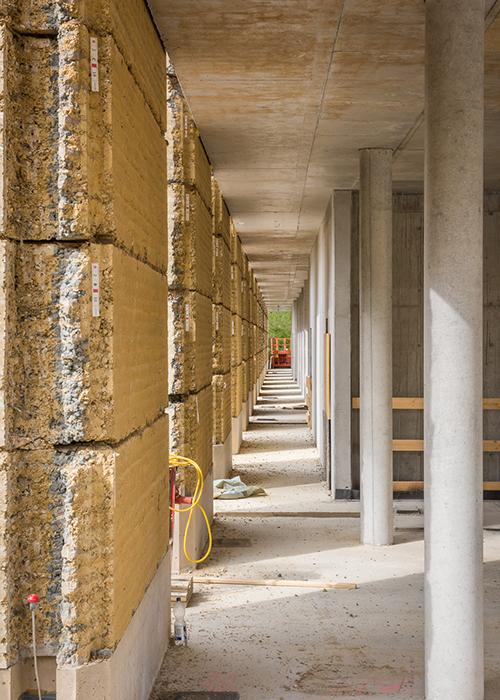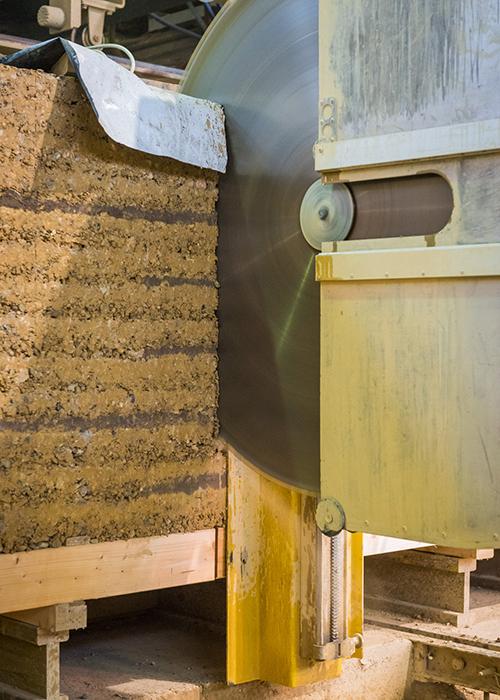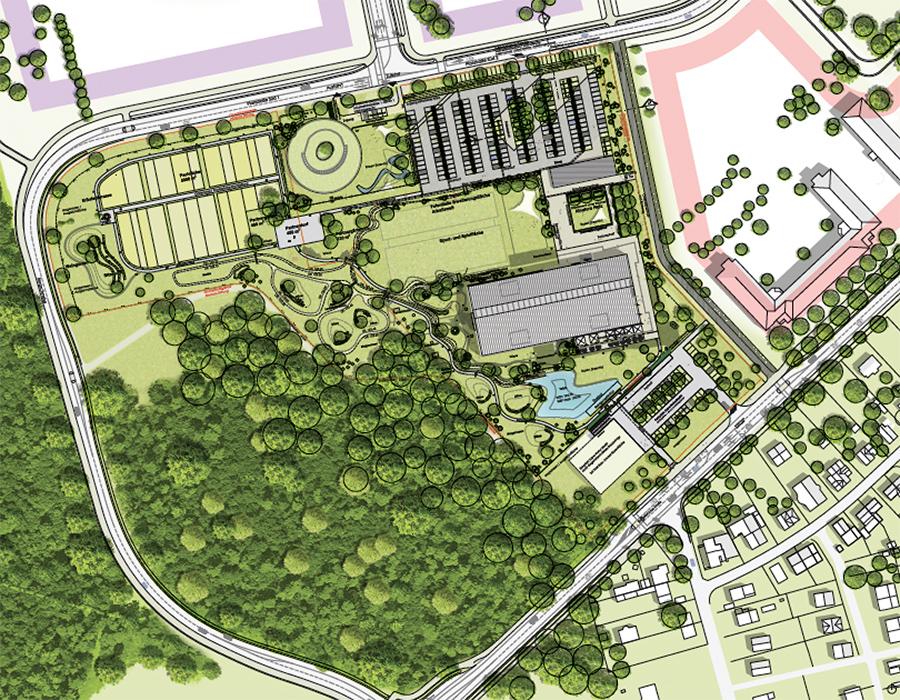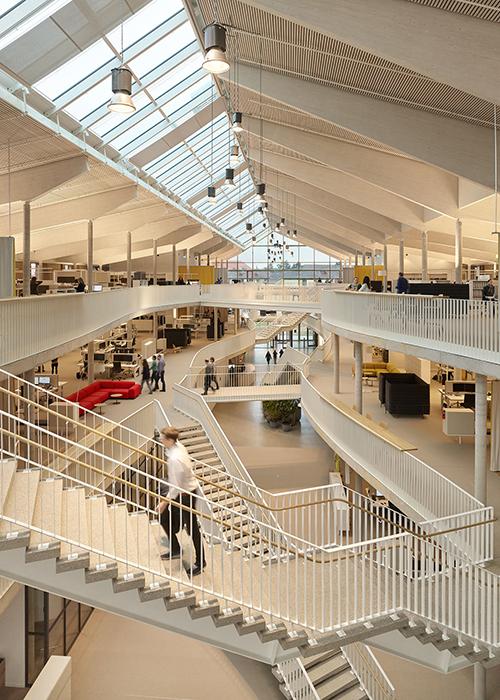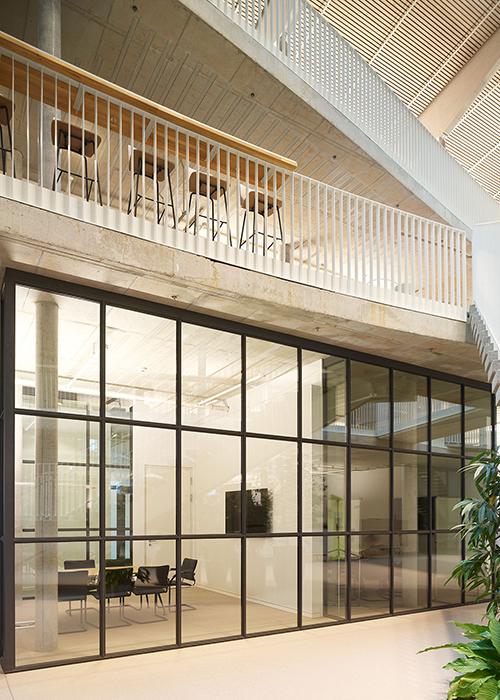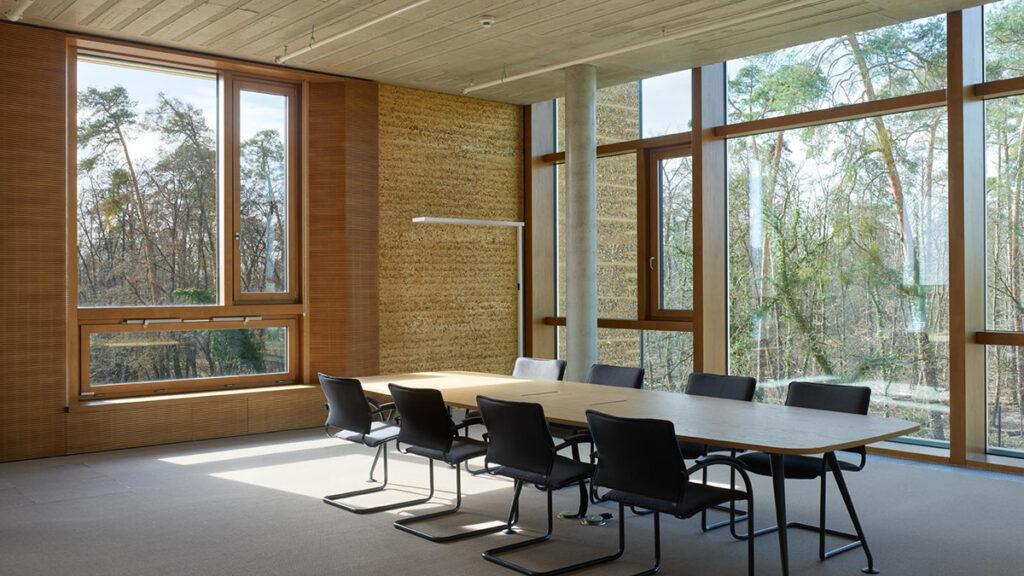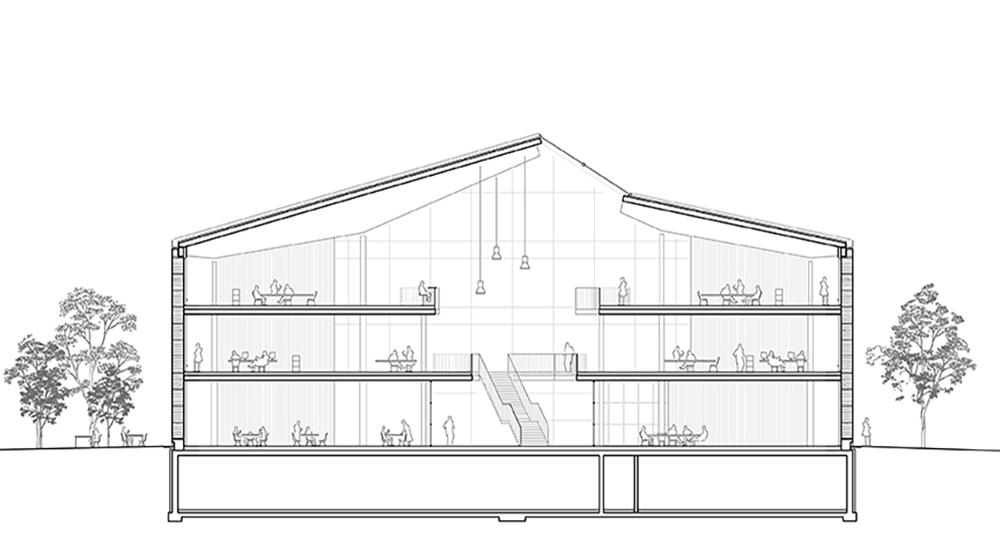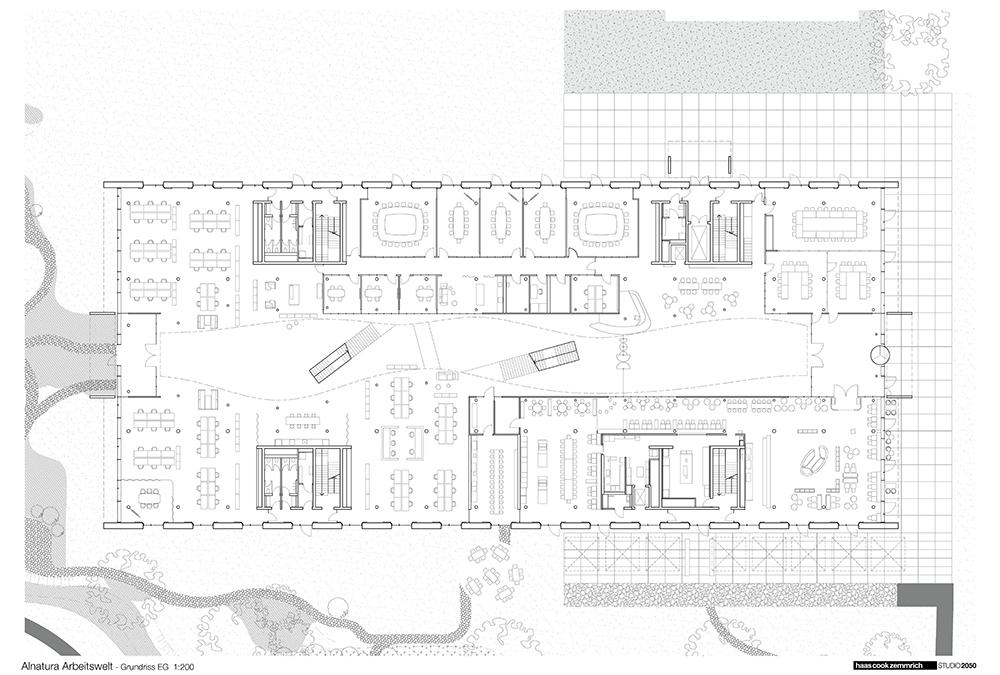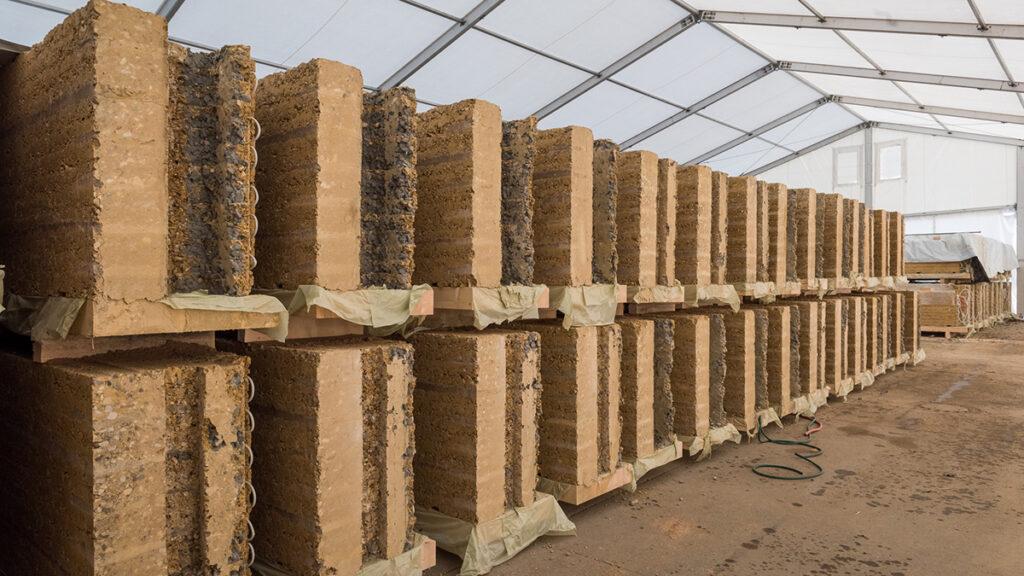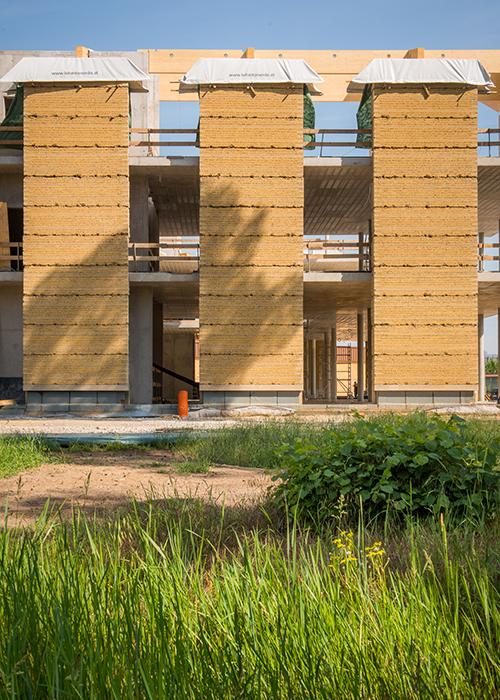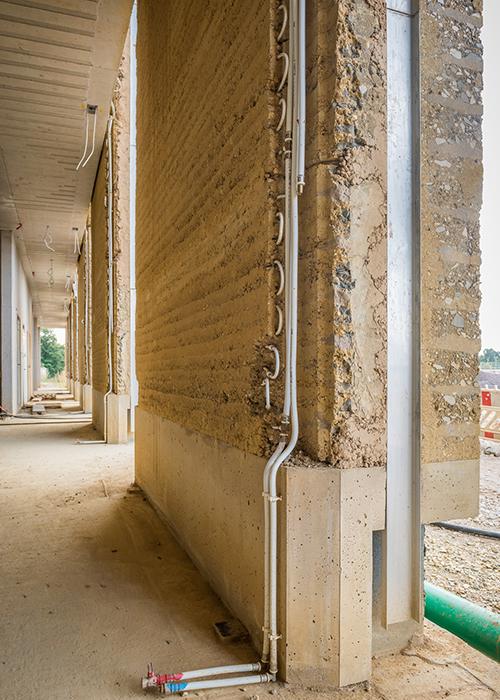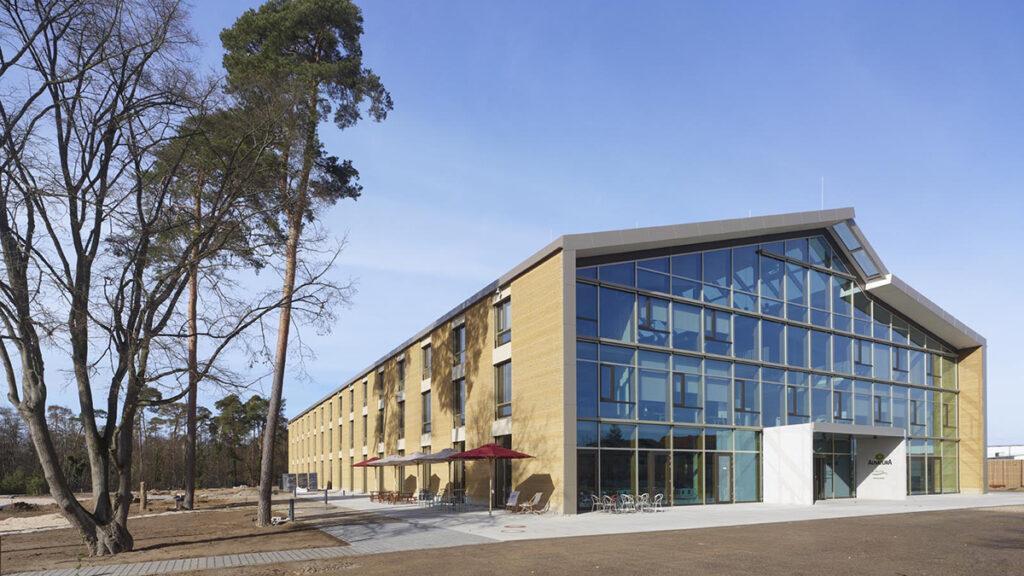A love of loam
Its heyday as a traditional mass building material is long gone. But sustainability has made loam interesting again. One recent example is the new Alnatura Campus in Darmstadt. Here, the architects have given loam construction an exciting comeback.
Many of the things that our predecessors considered practical are now being resurrected. The trend towards sustainable building materials has led to a renaissance for straw and wood. The Working Group for Loam Construction at Vienna University of Natural Resources and Life Sciences (ARGE Lehmbau – BOKU) believes that loam should enjoy a similar comeback. The specialists there are not alone in this opinion. After all, the architects from haas cook zemmrich STUDIO2050 recently included a special feature in a project near Darmstadt that masterfully highlights loam construction: the facade of the Alnatura headquarters was constructed from rammed earth – and the building was promptly awarded the German Sustainability Award for Architecture in 2019.
Rejecting preconceptions
Whether for walls, floors, plasterwork or decoration: this building material that was also traditional in Austria has a future once again. The ARGE Lehmbau aims to do away with old preconceptions that had long made the natural material seem boring.
The ARGE is headquartered at the Institute for Applied Geology in Vienna. On its website, experts explain where and how loam can be used to the best effect. In skilled hands, loam can provide many advantages that are currently in great demand. haascookzemmrich STUDIO2050 implemented these in innovative ways for the headquarters of the organic food provider. Yet the project, completed in 2019, is extremely interesting not only because of its loam construction elements.
We need to be even more daring in order for our buildings to make a significant contribution to the reduction of CO2 emissions. With Alnatura, we had a client who demonstrated this courage.
Martin Haas, architect and partner at haascookzemmrich STUDIO2050
For years, researchers have been trying to reduce the energy needs of finished buildings. As architect Martin Haas explains, this has led to more systems engineering and material. However, the expenditure of energy involved in construction has not been considered until now. Reason enough to take a different approach in planning the new Alnatura workspace: the grey energy was evaluated early on.
Planning tools for the future
This holistic approach received funds from the German Federal Environmental Foundation, DBU. And the architects were able to develop innovative solutions. In cooperation with the Technical University of Munich, new planning parameters were developed. These aim to help future projects to become resource-neutral as well.
There are many facets to what makes the Alnatura Campus climate-neutral. Above all, it is recycled and reusable materials as well as building materials like wood and loam. This reduces the environmental impact during the construction process. At the same time, the environmental footprint of the complex is greatly improved. Any potentially high waste disposal costs are also eliminated, since polluting substances have been avoided.
An inviting environment for work
The heart of the new Alnatura headquarters is the “work environment”. This inviting facility is located on the site of the former US Army Kelley Barracks, which served as refugee housing from 2015 to 2018. It has a lot to offer. Not least because a vegetarian restaurant serves healthy meals directly adjacent to the main entrance.
Those who expect a classic office feeling in the interior will be pleasantly surprised: the ground floor functions as a communicative meeting space for visitors and employees. The atrium gives you the feeling of being under the open sky. The timber roof and transparent front facade let plenty of sunlight into the building. The west side offers an unobstructed view of the tall pines in the adjoining forest.
Playfully flexible
Curving tiers give the interior a playful sense of lightness. Public and internal areas merge seamlessly into one another. Stairways, bridges and walkways connect the office areas, spread over three levels.
Instead of rigidly delimited rooms, everything is optimized for open flexibility. The building and the campus offer employees the choice of where they want to work – from the relaxed counter area by the gallery railing to “private” rooms and seating alcoves near the loam-framed windows to the wooden deck by the water lily pond.
In order to provide the best possible daylight conditions, the long sides of the structure face to the north and south. This lets pure northern light enter the atrium skylight. At the same time, undesirable warmth from the sun is avoided. Approximately 10,000 m2 of office space is grouped around the atrium. The height of the storeys allows daylight to reach even the lower-level areas.
Natural heat protection
All the windows feature glare and sun protection to individually control incoming light. On the sunny south side of the building, a pond serves as a natural buffer that benefits the location’s microclimate in the summer. Trees provide shade here as well.
A 480 m2 PV system on the roof captures sunlight for energy production. Since the conference area requires a high air-exchange rate, it is located on the cooler north side.
The adjacent forest was ideal for achieving the goal of ventilating the building naturally throughout the year. Fresh air is drawn inside via two air-intake towers at the edge of the forest and a subterranean channel. This allowed the architects to dismiss with resource- and maintenance-intensive air conditioning and ventilation systems. The natural cooling effect of evaporation on leaf surfaces makes the nearby trees a double jackpot.
Always airy and cool
Soil stores the stable average temperature. Thus, the air that flows into the building is pre-conditioned naturally – warmed in the winter and cooled in the summer.
The chimney effect of the atrium propels air currents within the building. If weather conditions require it, fans can be switched on in the interior of the channel. Needless to say, the windows in the facade can be opened individually.
Not only the loam material, but also the storage mass of the concrete ceiling guarantee stable, balanced temperatures. On hot days, the height of the rooms and the evaporation cooling effect of the loam prevent heat pockets from forming. The 69 cm-thick loam walls ensure that the Alnatura building needs no additional cooling devices even in summer.
Loam construction with heating coils
Even when winter calls for extra warmth, the loam construction continues to perform well. In this case, because the architects had heating coils inserted into the walls. These are fed with warm water from renewable sources such as geothermal tubes and reclaimed waste heat. The rooms are therefore heated – highly efficiently – by means of thermal radiation.
Good use of rainwater
Since climate change is bringing long dry spells and sudden storms, special attention is paid to dealing with rainwater on the campus. The site has been specially modelled for it: streams and troughs channel water into a 1000 m3 underground cistern. The roof drainage system is also connected to this reservoir. The collected water is used for cultivation of the partner and school gardens as well as for grey water.
The building’s pleasant acoustic level is thanks in part to the open-pored structure of the rammed earth wall. The timber roof with its wood slat ceiling, the wooden window frames and the microperforated panels on the building cores also contribute to dampening the noise. A new development by the Fraunhofer Institute is a further factor.
Creative noise control solution
Cladding panels or suspended ceilings would have diminished the thermal storage capacity of the ceilings and walls. The architects were not willing to live with this drawback. Absorber strips integrated into the concrete ceiling solved the problem. The cellular concrete structure of these prefabricated elements that were inserted into the building shell now effectively refracts sound waves.
Facade celebrates modern loam construction
The part of the campus that virtually celebrates loam construction is the facade. In cooperation with the Vorarlberg-based specialist Martin Rauch and Transsolar, an innovative rammed earth wall was developed. The 3.5 x 1 metre-high loam blocks were built up along the northern and southern facades to form 16 wall segments, each 12 metres high.
A world premiere in loam
In fact, construction history was even made here: for the first time in the world, a geothermal heating system was integrated into the rammed earth walls.
But that’s not all. The architects made use of other options that make loam construction exciting again. For example, the core insulation in the rammed earth elements that were pre-constructed directly next to the building site: the 17 cm-thick insulation is made of foam glass gravel, a recycled material. The outer layer of rammed earth is 38 cm thick, the inner layer 14 cm.
Loam, gravel and recycled materials
In total, the structure is 69 cm thick and achieves a good U-value of 0.35W/(m2K). The tall loam elements are self-supporting and are simply fixed to the storey ceilings with anchors. The walls contain not only loam from the Westerwald. Lava gravel from the Eifel region and recycled material excavated from the Stuttgart 21 railway station project were also used.
What might bring loam a similarly brilliant comeback to that of wood construction is the simplicity of its production. Nevertheless, efficient use of this natural material requires expertise and a feel for what is needed. Both the ARGE Lehmbau experts and the German architects emphasize this factor.
Still, the architects explicitly praise the material: “Rammed earth is very solid; its density is comparable to that of concrete. Thus, rammed earth is an excellent thermal storage mass and naturally regulates room air humidity.”
Minimal erosion
Horizontal erosion barriers were inserted in order to restrict the surface erosion of the rammed earth. These are made of clay and trass lime and placed at intervals of 30 to 60 cm. They “diminish the flow of water just like river engineering, thereby minimizing erosion,” says architect Martin Haas.
Almost no grey energy
The renowned studio co-founder also emphasizes: “Almost no grey energy is needed for the production, processing and potential removal of loam.” In this sense, therefore, loam is far ahead of well-known natural materials such as wood or clay bricks.
Thanks to its durability, outstanding humidity regulation and thermal storage capacity, loam construction will maintain its value for a long time, says Haas: the surface remains free of algae and moss, and no cleaning or upkeep is needed for the facade.
Loam construction benefits acoustics and indoor climate
In the interior of the new Alnatura building, the porous surface significantly improves the acoustics as well as the indoor climate. Furthermore, says Haas, loam gives the building a unique charm: “The impression of simplicity and honesty will be maintained for decades.”
Cultural heritage with a future
This expert opinion should make the ARGE Lehmbau very happy. After all, it views loam construction as part of Austria’s cultural heritage and is dedicated to its preservation and exploration. Successful examples such as this now-prizewinning project near Darmstadt can greatly benefit this cause.
Text: Elisabeth Schneyder
Translation: Rosemary Bridger-Lippe
Images: Roland Halbe, Marc Doradzillo, haascookzemmrich STUDIO 2050
